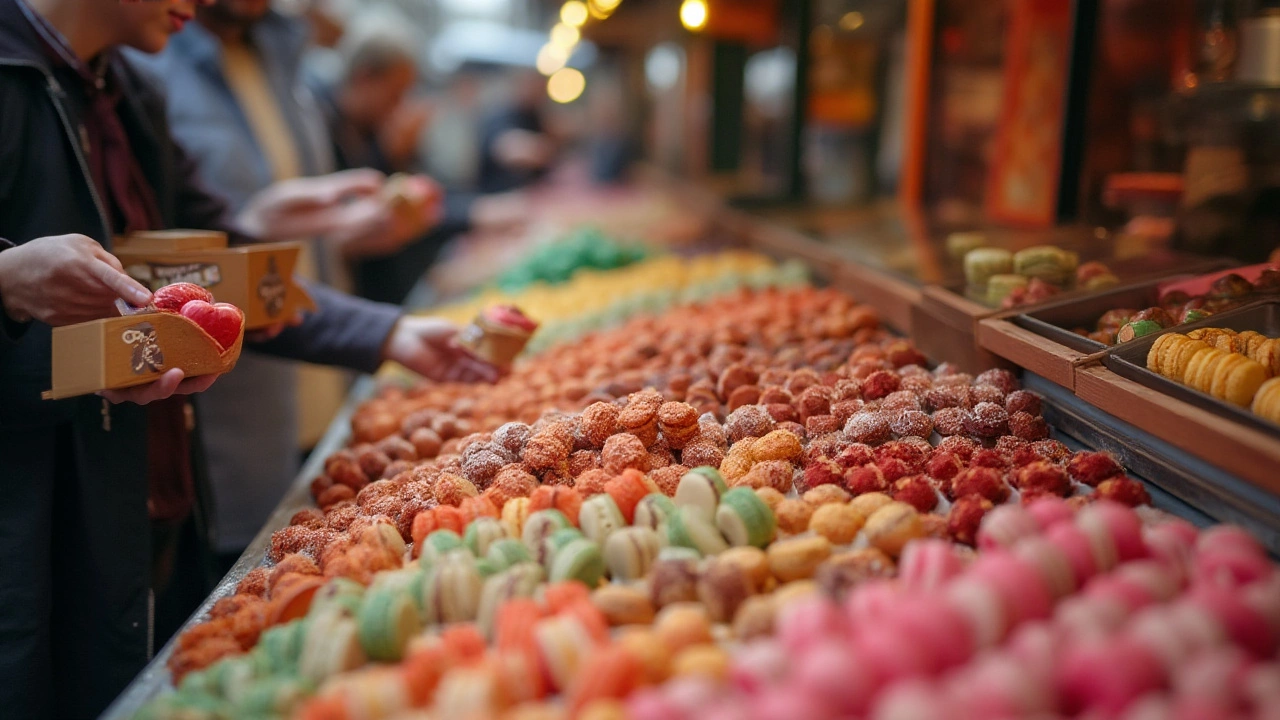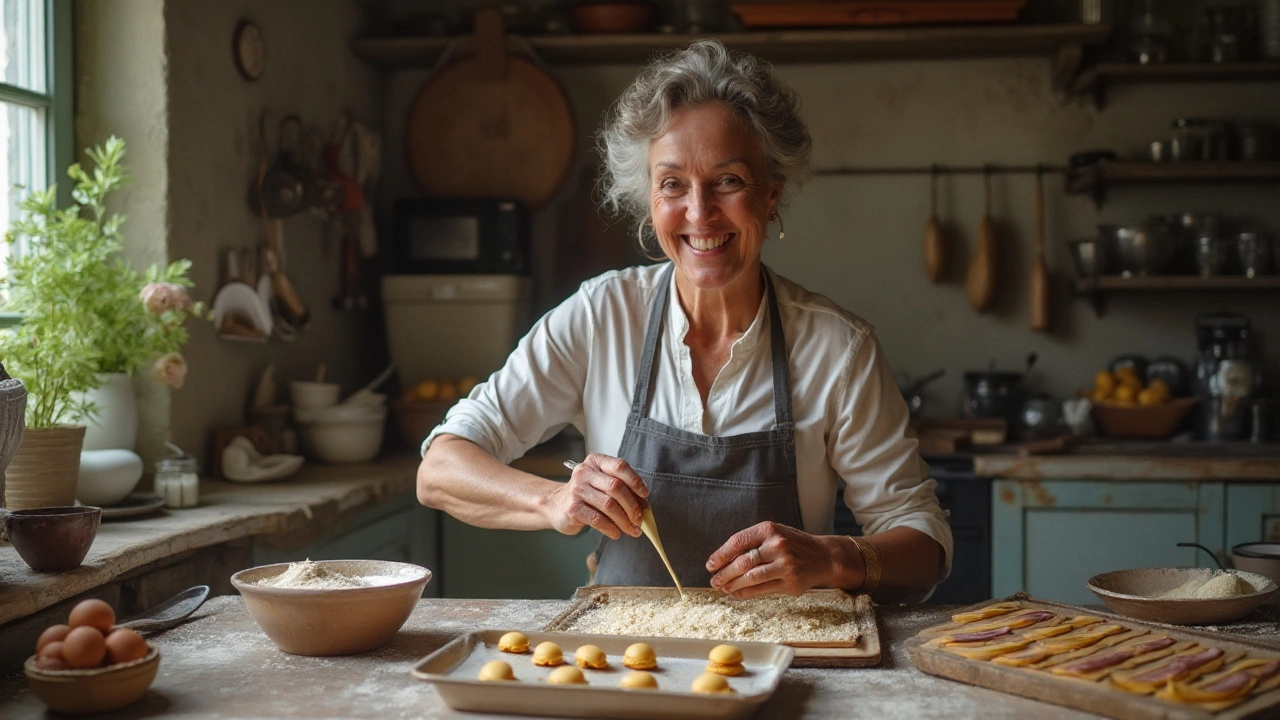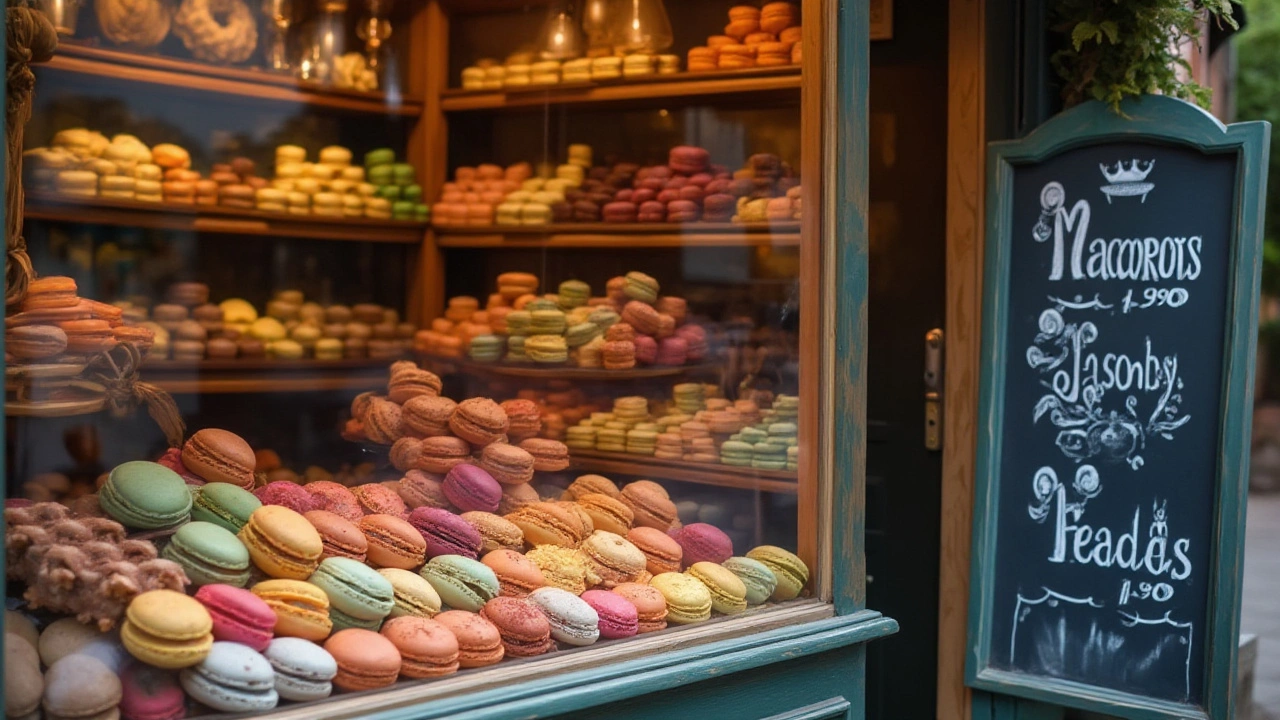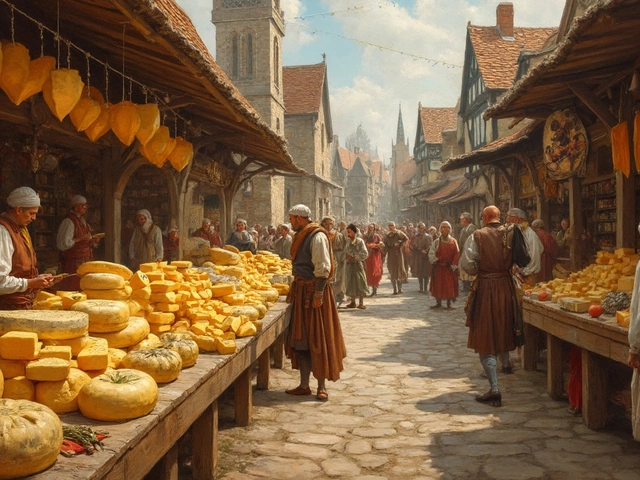Macarons, those delightful little confections hailing from France, have captured the hearts and taste buds of many across the globe. With a crisp shell and a soft filling, they are a luxurious treat for any occasion. However, not all macarons are created equal, and their price tags can vary quite a bit. So how exactly does one navigate the world of pricing when it comes to these colorful sweets?
In this guide, we will explore the different factors that can affect the cost of macarons, whether you’re buying in bulk or just a few to savor with tea. We'll look at the factors women encounter when purchasing macarons, from the ingredients to the geographic location. Moreover, if you're adventurous and wish to try your hand at making them at home, we have some insights into what that might cost as well. Join us as we peel back the layers of this delectable dessert and uncover the secrets behind its price.
- A Brief History of Macarons
- Factors Influencing Macaron Prices
- Pricing Variations by Region
- Tips for Budget Friendly Purchases
- DIY Macarons: Costs and Considerations
A Brief History of Macarons
The macaron, with its delicate appearance and exquisite flavors, has a history that is as rich and colorful as the cookies themselves. These delectable treats have origins that trace back to Italy during the Renaissance. It was in the 16th century that the macaron made its way to France, reportedly introduced by Catherine de' Medici, the Italian noblewoman who married King Henry II of France. Catherine brought with her the art of making macarons through her pastry chefs, which at that time were simpler than today’s vibrant, cream-filled delicacies.
As time passed, the macaron began to evolve in France, where it became part of local culinary traditions. By the 18th century, macarons were popularized by the nuns of the Nancy region, who famously sold them to support their community. Known as the “Macarons des Sœurs,” or the Macarons of Sisters, these cookies became celebrated not just for their taste but also for their connection to local history. The macaron continued to gain favor, spreading across French patisseries with their elegance and charm.
In the early 20th century, Pierre Desfontaines of the famous pâtisserie, Ladurée, revolutionized the macaron by introducing the double-decker version, filled with a luscious layer of ganache or buttercream. This innovative twist transformed the confection from a humble cookie into a culinary art piece that required precision and skill. It was during this period that the macaron as we know it today emerged, becoming a staple of French pastry.
"The macaron is ephemeral and truly, essentially alive," said Pierre Hermé, a respected pastry chef known as the Picasso of Pastry, highlighting the fleeting joy and artistry involved in creating these delights.
Fast forward to the present day, and macarons have gained global popularity, a symbol of luxury and sophistication enjoyed at tea times and grand celebrations. They have not only conquered traditional markets but have also adapted to various tastes worldwide, incorporating flavors from around the world. With bakeries now offering macarons in an incredible array of flavors and colors, including exotic ones like matcha, rose, and salted caramel, macarons continue to enchant dessert lovers everywhere. This historic journey from humble beginnings to haute patisserie continues to make the macaron a beloved sweet treat across cultures.
Factors Influencing Macaron Prices
When it comes to buying macarons, there are several factors that can significantly influence their pricing. Understanding these factors is crucial for both aficionados and newcomers who want to indulge in these delightful confections without being caught off guard by the cost. A key factor, unsurprisingly, is the quality of ingredients. Authentic macarons are made with almond flour, which is considerably more expensive than wheat flour. The eggs used must be fresh, often requiring free-range or organic standards to ensure the best taste and texture. High-quality flavors like Madagascar vanilla, Sicilian pistachios, or Belgian chocolate also add to the cost, as these ingredients are sourced from specific regions known for their premium quality.
The labor involved in making macarons is another factor influencing their price. Crafting these delicate pastries requires a high level of skill and precision; from the careful folding of meringue to achieving just the right level of crunch on the shell. Many renowned patisseries have experienced pastry chefs who demand fair compensation for their expertise. The process is time-consuming, often taking over 24 hours from start to finish. The complex technique and attention to detail required are part of the reason why macarons have earned a reputation as a luxury dessert. If you're seeking out these little jewels at a local bakery or patisserie, the level of detail and craftsmanship can impact the price.
Location also plays a critical role in determining cost. Purchasing macarons in larger urban centers or areas with a high cost of living generally leads to higher prices. For instance, macarons in a shop in Paris's upscale arrondissement might cost more than those found in a small-town bakery. Additionally, well-known brands or those associated with celebrity chefs often set a premium because of their brand reputation. Packaging is sometimes a cost element too; luxurious or custom-designed packaging can add to the final price, making them particularly popular for gifts. Seasonal and limited-edition flavors can also affect pricing, with exclusive offerings during certain times of the year enticing buyers to pay more.
The Impact of Market Demand
Market demand for macarons can fluctuate based on trends and events, influencing prices in the process. Around holidays like Valentine's Day or Christmas, the demand can skyrocket as these colorful treats become a popular choice for gifting. Event-specific designs or flavors released during these times can fetch a higher price due to their exclusivity. As the market continues to expand globally, some regions might see increased prices as macarons grow in popularity. According to a recent study, the global market for macarons is expected to reach substantial growth by the end of this decade, driven by the rising popularity of unique and artisan desserts. This growth can create competition, thus influencing both wholesale and retail pricing strategies.
"The macaron, a symbol of French confectionary excellence, reflects not just a pursuit of flavor but also the heart of cultural artisanal craftsmanship," shares Pierre Hermé, often referred to as the 'Picasso of Pastry'.

Pricing Variations by Region
The price of macarons, those charming almond meringue cookies with a myriad of flavors, isn't just a matter of culinary art; it's also geography. A visit to a patisserie in Paris will certainly showcase macarons at a rate that differs from those in New York, Tokyo, or even a small town bakery. The cost disparity often surprises first-time buyers but understanding the intricacies behind this can elevate one’s appreciation for these delicate cookies. In Paris, for instance, renowned establishments such as Ladurée or Pierre Hermé set the pricing benchmark. On average, a single macaron in these opulent stores might set you back about 2 to 3 Euros, reflecting both the high-quality ingredients used and the brand prestige they command. However, venturing outside the central arrondissements might present slightly more affordable options, with neighborhood patisseries offering delicious alternatives at friendlier prices.
Across the Atlantic, prices in North America, including cities like New York or Los Angeles, tend to be higher. A single macaron might range from $3 to $5, depending on the bakery’s reputation and the ingredients featured in the filling. Boutique bakeries often tout locally sourced or exotic components, justifying the price hike. It's not just about indulgence, but an experience—each bite a testament to the care and craft involved in its creation. To provide a perspective, one might consider the rent and labor costs driving these prices in metropolitan areas. Indeed, Jacques Torres, a famed chocolatier, once noted, 'Good macarons inevitably reflect the harmony of their origin, each piece mirroring the ambiance of its place of creation.'
In Asia, the allure of macarons is no less potent, but the pricing displays another level of variation. Japan's market, known for its love of French pastries, sells macarons at premium prices yet aligns closely with European standards when it comes to quality. A single macaron may cost approximately 300 to 400 Yen in upscale Tokyo districts. In contrast, countries such as Vietnam or Thailand offer these sweets at noticeably lower prices, partially due to lower operational expenses and a burgeoning local production scene that alters traditional recipes with unique regional flavors.
For those venturing into the realm of budget macarons, regional bakeries or seasonal farmers’ markets often provide delightful yet affordable alternatives. These versions might lean towards local twists, introducing flavors inspired by indigenous fruits or spices. It's not uncommon to find lines at such stalls during weekend markets in cities known for their vibrant culinary scenes. While the pricing may be easier on the wallet, the experience of trying inventive flavors can often rival that of more recognized establishments.
Finally, the online world opens up an avenue to explore regional pricing without the need for travel. Here, costs may vary widely, encompassing the shipping fees that accompany international delivery. With careful research, one might stumble upon both extravagant luxury options and reasonably priced bulk orders, catering to people with varied preferences and occasions—from personal indulgence to grand celebrations.
Tips for Budget Friendly Purchases
When it comes to indulging in the artistic delight that macarons offer, it’s worth considering how to enjoy them without overspending. First and foremost, understanding what drives the price of macarons can aid in making smart decisions. Ingredients play a crucial role – almond flour, high-quality chocolate, and fresh fruit fillings can significantly impact costs. Knowing this, look for stores that use comparative alternatives without compromising taste. Seasonal or local flavors might be cheaper yet flavorful options to consider, as these ingredients are often sourced more efficiently.
Getting to know your local bakeries can work wonders in snagging a good deal. Many bakers will have end-of-day sales where they offer discounted macarons before closing up shop. Befriending your local baker not only builds relationships within your community but can also lead to insider knowledge about upcoming promotions or special events where macarons may be offered at a reduced price. Additionally, look for volume discounts. While a single macaron might cost more, purchasing a box of 20 could lower the price per piece, giving you more bang for your buck.
Special occasions like birthdays or holidays might have bulk deals that could be pocket-friendly. If you are particular about certain flavors or wish for a customized batch, some patisseries offer classes or events where you can learn to make your own. This not only saves money in the long run but also introduces you to the art of macaron making. You may find the journey of crafting these tiny wonders just as delightful as eating them.
An emerging trend is ordering online, where competition can drive down costs, as numerous sellers vie for attention. Always check for reviews and ratings to ensure quality. Signing up for newsletters from online stores can also reveal exclusive discounts or first dibs on sales. Occasionally, places sell imperfect or "ugly" macarons, which might not look the part due to slight errors in shape but are just as tasty. These are often sold at a fraction of the price and can be a fantastic option for just a personal treat.
"However, much you may desire macarons, remember that the genuine delight lies not in possessing many, but in savoring each one."
Also, consider looking beyond upscale shops. Farmer’s markets and independent vendors can sometimes surprise you with quality macarons at lower prices, often due to less overhead. Engage with vendors to know more about their process – smaller batch sizes often mean attention to detail, providing a unique experience you might miss in larger production brands. Though patience is necessary, the rewards can be sweet – both for your palate and your wallet.

DIY Macarons: Costs and Considerations
Embarking on the journey of making your own macarons at home can be both exciting and daunting. These colorful confections are renowned for their intricate design and delicate texture, requiring a precise blend of art and science. Before diving in, it's crucial to understand the costs associated with these delectable delights. Though a bag of store-bought macarons might seem expensive, creating them yourself isn't necessarily a budget-friendly solution due to the quality and price of ingredients.
To begin with, the essential components of macarons include almond flour, sugar, egg whites, and a pinch of salt. While these sound simple enough, macarons require top-notch ingredients. Almond flour, for instance, is significantly more expensive than regular all-purpose flour. A pound of almond flour can cost around $10 to $15, depending on the brand and source. Add in the cost of confectioners' sugar and granulated sugar, which, though not exceedingly expensive, add to the overall expenses. Eggs for the whites and fresh cream or fruit purées for the fillings further increase costs, especially when opting for organic or specialty products.
Moreover, there's the need for equipment. If you don't already have piping bags, a fine sieve for sifting, and silicone mats or parchment paper, you will need to acquire them. A good quality kitchen scale is also an essential tool for ensuring precision in measurements, which is crucial for macarons. Then, there's the cost of food coloring and flavor extracts, which are instrumental in creating vibrant and varied macarons—these too can make a dent in the wallet. In short, while homemade macarons can give you the satisfaction of creating from scratch, the total material cost could well exceed $25 or more per batch.
The Skill and Time Factor
The cost of-making macarons is not just financial; it includes time and effort as well. Preparing the meringue base and achieving the perfect 'macaronage'—a critical process of folding the mixture to the right consistency—is not an easy task. Mastering the French or Italian method, which encompasses different techniques, requires patience and, more often than not, several trial and error attempts. This time investment can be quite burdensome for those with busy schedules.
"Macarons are deceivingly tricky. It’s a delicate balance of chemistry and patience," says Claire Freeman, a renowned pastry chef whose macaron classes attract budding bakers from around the world.
Patience is indeed the key ingredient. Making macarons in batches, allowing them to form skins, baking at precise temperatures, and then filling and setting them—all require a day of meticulous attention. The first few attempts might not yield the desired results as these desserts are notoriously unforgiving of even slight missteps. However, the joy of seeing your homemade macarons finally form the perfect "feet" under their shell is an unmatched culinary success.
Weighing the Pros and Cons
Making macarons at home offers a tailor-made adventure into flavors and colors that aren't always available from commercial patisseries. You have the liberty to craft unique combinations, experimenting with fillings from lavender and honey to matcha and black sesame. But consider the toll of trial, error, and material cost before venturing too deep. Macarons are more of a labor of love rather than a cost-cutting culinary exercise.
If you're someone who bakes regularly and already has the necessary equipment, making macarons at home for special occasions or gifting may still be cost-effective. However, for those who are new bakers, it could be wiser to start by purchasing small quantities from the store while taking classes or self-studying to enhance your baking skills. This way, you savor the best of both worlds without overwhelming yourself with the pressure of making perfectly beautiful macaron halves on your first attempt.





